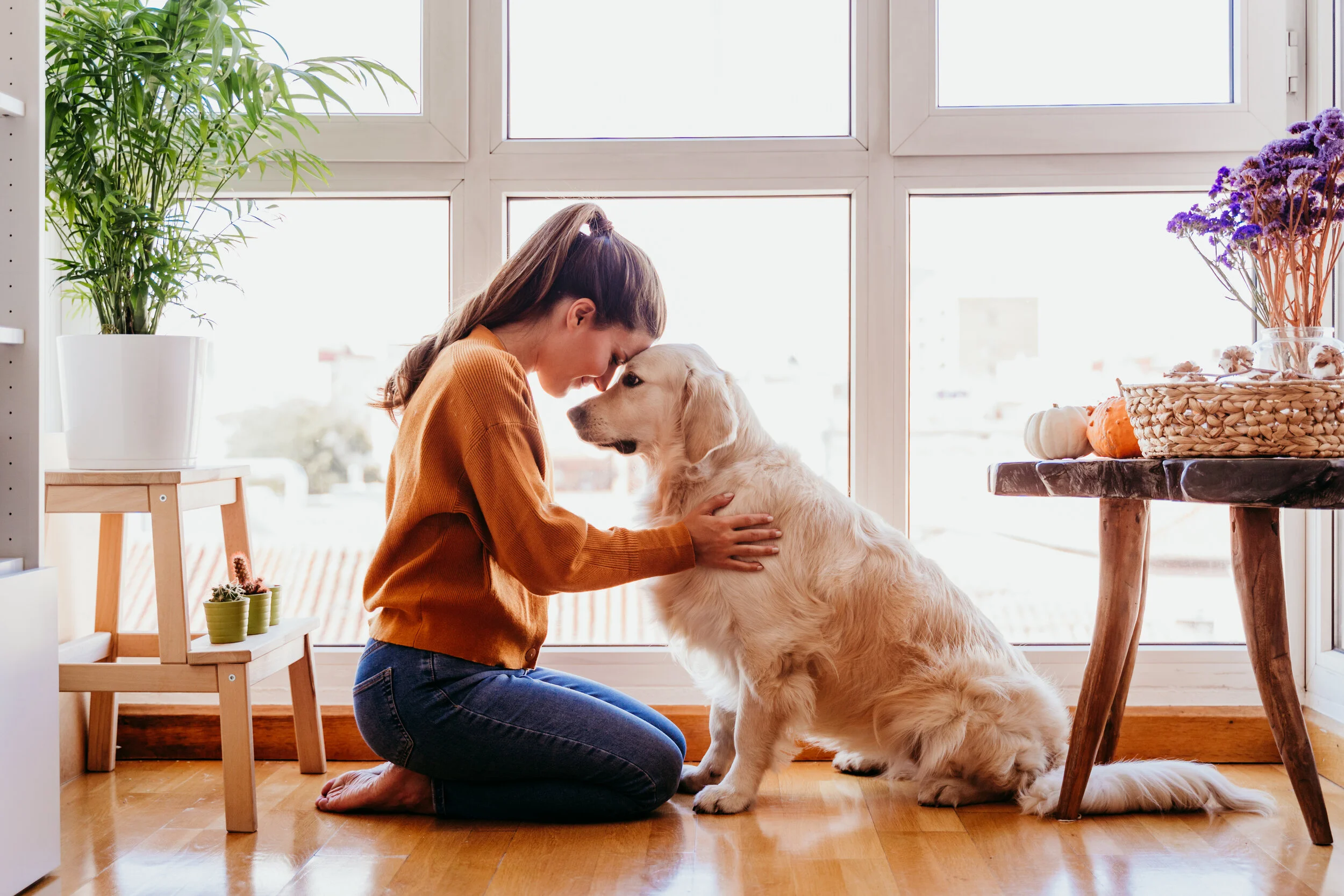Owners may mean well, but many popular ways of showing affection to dogs can lead to behavioral issues. This includes everything from feeding them table scraps through stirring them up when you get home. Poor behavior in dogs needs to be carefully controlled from the start, with positive reinforcement for healthy actions.
1. Begging for food
Many dog owners naturally gravitate towards using food to express love for their dogs, but this often reinforces bad behavior in dogs. Begging for food is not a healthy behavior. Dogs who beg should be ignored. Remember, you are feeding your dog regularly and well; they are not actually starving, despite what you may perceive their facial expression to mean.
2. Jumping on people or onto surfaces
Jumping is a known attention-seeking dog behavior. Any attention bestowed upon them after jumping—including chastising them—will result in furthering this behavior. It is particularly important to discourage jumping, or else an overenthusiastic dog could hurt someone.
3. Barking
Maybe you are a dog owner who feels you just can't get a control of your dog's barking, or maybe you even like the sound. Excessive dog vocalizations—which happen most commonly as barks, but may also be expressed as whines, howls, or other sounds—are examples of bad behavior in dogs. In order to correct excessive barking, one must understand the source of the behavior. Is it anxiety? Is it boredom? Does your dog feel threatened, or do they feel excited about seeing other dogs? Once you understand why your dog is vocalizing so much, you can work towards a solution.
4. Chewing, biting, or nipping
Chewing may quickly escalate into costly or even potentially dangerous behavior. Biting or nipping can be dangerous for both your dog and the recipient of their bites. Once again, understanding the source of bad behavior in dogs is critical to developing a long term strategy that can adequately address it. There is a chance that the biting is caused by discomfort stemming from illness, and so it is always a good idea to rule out any more serious illness.
5. Digging
Digging is actually a relatively complex dog behavior that cannot necessarily be attributed to one particular cause. Some dogs dig because they are anxious; other dogs are bored and need an outlet for their energy. Still other dogs are extremely possessive and territorial, and digging serves their purposes. Many feel the need to bury their toys, while other dogs feel their hunting instinct kicking in.
6. Separation Anxiety
The ways in which dog behavior can start to show separation anxiety include a wide range of actions including anxiety around their owners' departure through to constantly needing to touch or follow their owner. Generally this anxiety flares up in the first 15 to 45 minutes after their owner leaves, with consequences that may include accidents, property damage, and even dogs injuring themselves.
One dog behavior not mentioned on this list includes inappropriate elimination, such as a dog peeing when or where they are not supposed to. This may be a bad behavior, but it may also be a sign of illness; it is particularly important to first rule out any underlying causes.
In all cases, correcting dog behavior requires consistent, sustained intervention through special training, behavioral modification exercises, and even desensitization training. It is always a good idea to examine what behaviors you and your family are carrying out that might be triggering poor dog behavior. Similarly, consider whether all of your dog's needs are being met; ask yourself whether you are exercising your dog enough, spending enough time with them, and so forth.
Ready to explore options to manage your dog's behavior and mental health? Look no further than the Animal Care Clinic. Request an appointment today.

